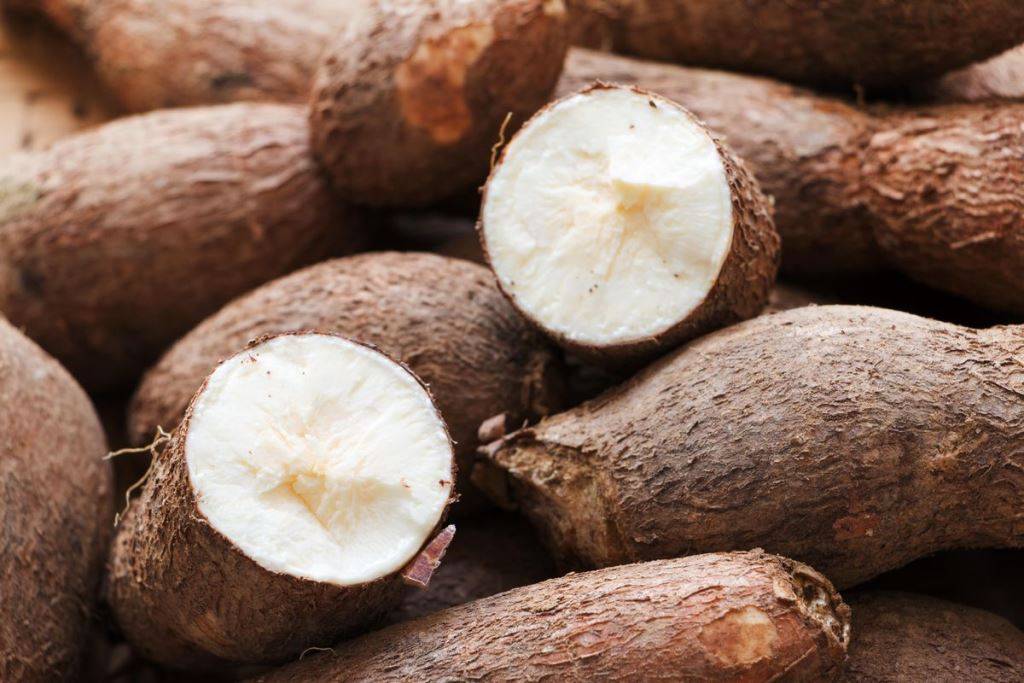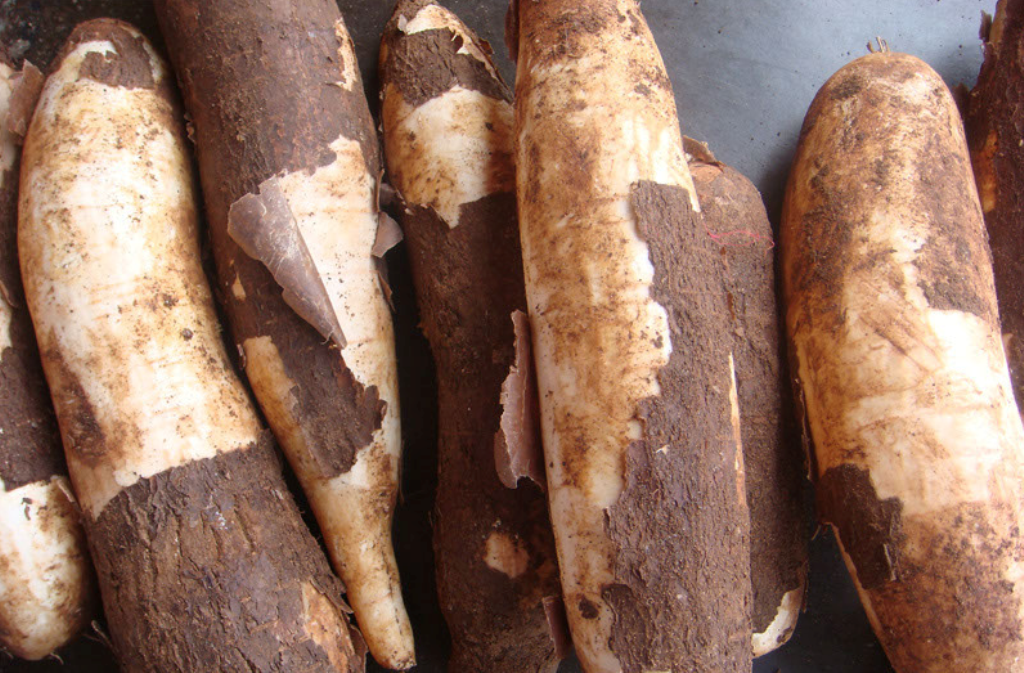
Central Tuber Crops Research Institute (CTCRI) which is having a dedicated team of scientists in its R&D wing has developed many varieties of hybrid tubers mainly in cassava and sweet potato to support the farmers to get better yield with good quality. A few of the popular varieties in cassava are H-226, H-165 and Sree Jaya.

Cassava - H-226
H -226 hybrids occupy nearly 47% of the cassava cultivation in Tamil Nadu. This will come to around 95,000 hectors of land. The maturity period of H-226 is 10 months and the average yield is calculated as 35 tons per hector. H – 226 hybrid cassava has 28 to 30 % starch. Farmers prefer this variety because of the yield potential and suitability to rainfed conditions. These tubers can peel easily and hence sago factories in and around Salem district prefer H -226 varieties for industrial purpose.

Cassava H-165
This hybrid is developed to suit the soil and climate of Kerala but preferred by the tribal farmers of Andhra Pradesh and Tamil Nadu. Almost entire cassava area of Kolli hills, Pachamalai, Kadambur hills and siddheri hills of Tamil Nadu and Rampachodavaram hills of Andhra Pradesh are occupied by this variety. They preferred H-165 for its ability to come up in hilly areas and matures in 8-9 months. Its yield per hector is 36 tons. Starch content in H -165 is 23 to 25 % only. The planting material will remain as good for a longer period than other varieties. Its easy harvestability and early bulking are the advantageous characters.
Sree Jaya
This variety is very popular among farmers of Kottayam and the East Godavari district of Andhra Pradesh. It is developed from a selection of indigenous germplasm. Sree Jaya is known for its early maturing i.e. 6-7 months and excellent cooking quality. It is very much suitable for low land cultivation as a rotation crop in the rice-based cropping system. The average yield of the crop is 28 tons per hectare and in certain places, the yield is higher up to 58 t/ha.
Sree Bhadra, Gouri, and Sree Kanaka are the popular hybrid varieties of sweet potato.
Sree Bhadra
Sree Bhadra is a very popular variety of sweet potatoes in Bihar, Jharkhand, and Maharashtra. Farmers prefer this variety mainly because of its good yield, skin color, and cooking quality. Carotene content in Sree Bhadra is 0.5 to 0.6 mg/ 100 gm and it matures by 90 days. Its tuber skin color is an attractive light pink and the flesh is cream in color. It will give a yield of 23 t/ha.
Gouri
The hybrid variety Gouri gives a better yield than Sree Bhadra but will take more time to mature. This variety is developed for cultivating in Odisha and is tolerant to mid-season stress. It is suitable for both Kharif and Rabi. Carotene content in Gouri is 5.1 mg / 100 gm and is higher than that of Sree Bhadra. It matures in 115 days and the yield will be up to 30 t/ ha. Its tuber skin is purple-red with attractive deep orange flesh.
Sree Kanaka
This variety has carotene content of 9-10 mg/ 100 gm that is almost equal to that of carrot. It is preferred and suggested to areas where nutritional deficiency of Vitamin A is observed. It matures within 75 to 85 days and the yield potential is 20-30 t/ ha. Its tubers are cylindrical in shape with dark orange flesh.
CTCRI has also developed many hybrid varieties of yam and among them, Sree Dhanya and Sree Shilpa are the most popular.
Sree Shilpa
Sree Shilpa is the first-ever hybrid greater yam developed in the world. It matures in eight months giving an average yield of 28 t/ ha. The tubers are medium in size with 2-3 tubers per plant and are swollen, oval, and smooth. They are shallow in tuberisation and hence easy to harvest without much damage.
Sree Kiran
Sree Kiran is the first Taro hybrid developed in the world by the hybridization of two indigenous taro varieties. It gives a high yield of 17.5 t/ ha and its corms have a longer shelf life of 65-70 days double that of local varieties and have good cooking qualities. Its corms contain 17.8 % starch. CTCRI in its continuous effort to innovate has so far developed 49 varieties of tuber crops, complemented by another 40 from the State Agricultural Universities in the All India Coordinated Research Project (AICRP) network.











